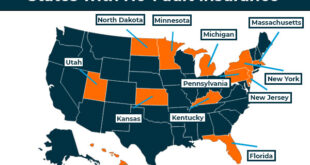Flexible Payment Plan: Budget and Manage Finances Effectively A flexible payment plan offers a practical solution for individuals looking to manage their expenses without straining their finances. By understanding its benefits, options, and strategies, you can ensure financial stability while achieving your goals.
What is a Flexible Payment Plan?
A flexible payment plan allows borrowers or customers to customize repayment schedules based on their financial capabilities. These plans are commonly offered for loans, subscriptions, and other recurring payments.
Benefits of Flexible Payment Plans
- Customizable Repayments
Tailor payment schedules to align with your income or cash flow cycles. - Reduced Financial Stress
Smaller, manageable payments reduce the likelihood of financial strain. - Avoidance of Penalties
Flexible options often eliminate penalties for delayed payments. - Improved Cash Flow Management
Helps balance short-term and long-term expenses efficiently.
Types of Flexible Payment Plans
- Income-Driven Repayment
Adjust payments based on your earnings, common in student loans. - Deferred Payment Options
Delay payments during financial hardships without accruing heavy penalties. - Split Payments
Divide monthly payments into smaller installments spread across weeks. - Pay-As-You-Go Plans
Common in utilities or subscriptions, where you pay only for what you use.
How to Choose the Right Flexible Payment Plan
- Assess Financial Needs: Analyze income and expenses to determine affordability.
- Compare Options: Look for plans with lower fees, better terms, and no hidden charges.
- Read Terms Carefully: Understand clauses related to late payments or plan modifications.
- Seek Professional Advice: Consult financial advisors to make informed decisions.
Steps to Set Up a Flexible Payment Plan
- Contact the Service Provider
Reach out to negotiate terms that suit your financial situation. - Submit Required Documents
Provide proof of income or financial hardship, if needed. - Agree on Terms
Ensure all terms, such as duration and amount, are mutually agreed upon. - Monitor Payments
Use financial apps or tools to track due dates and ensure timely payments.
Advantages for Businesses Offering Flexible Payment Plans
- Customer Retention: Enhance loyalty by accommodating customers’ financial needs.
- Improved Cash Flow: Regular, smaller payments reduce default risks.
- Competitive Edge: Stand out by offering options that prioritize customer convenience.
Potential Drawbacks and How to Overcome Them
- Higher Costs Over Time
- Solution: Pay more than the minimum when possible to reduce interest.
- Complex Terms
- Solution: Request simple, transparent agreements.
- Risk of Overextension
- Solution: Stick to a realistic budget and avoid overcommitting financially.
10 Tips for Managing Flexible Payment Plans
- Set Clear Goals: Define what you want to achieve with the plan.
- Budget Effectively: Allocate funds for payments before discretionary spending.
- Track Due Dates: Use calendars or reminders to avoid missed payments.
- Pay More When Possible: Reducing the principal saves on long-term costs.
- Automate Payments: Minimize errors and ensure punctuality.
- Communicate with Providers: Update them if financial circumstances change.
- Review Terms Annually: Check for adjustments or renegotiation opportunities.
- Avoid Over-Reliance: Use flexible payment plans only when necessary.
- Save for Emergencies: Maintain a safety net to handle unexpected expenses.
- Seek Professional Guidance: Consult experts for complex financial decisions.
10 FAQs About Flexible Payment Plans
1. What is a flexible payment plan?
A payment arrangement allowing customers to adjust repayment schedules according to their financial capacity.
2. Are flexible payment plans interest-free?
Not always; some may include interest or service charges.
3. Can I change my payment schedule later?
It depends on the provider’s policies and terms.
4. Are flexible payment plans suitable for everyone?
Yes, but they work best for individuals with fluctuating incomes or temporary financial constraints.
5. How do I qualify for a flexible payment plan?
Typically, you need proof of income or financial hardship.
6. Are there penalties for adjusting the plan?
Some providers may charge fees for changes; always read the terms.
7. How do flexible payment plans affect my credit score?
Timely payments improve credit, while delays may harm it.
8. Can I negotiate a flexible plan for any type of debt?
Most providers are open to negotiation, especially for loans and subscriptions.
9. Do flexible payment plans increase debt?
Not necessarily, but longer terms may accrue additional interest.
10. Are there any government-backed flexible payment options?
Yes, programs like income-driven student loan repayments are government-supported.
Conclusion
Flexible payment plans are a powerful tool for maintaining financial stability while managing obligations effectively. By understanding the terms, benefits, and strategies for optimizing these plans, individuals and businesses can reap substantial benefits.
Take advantage of flexible options to balance your financial priorities, minimize stress, and achieve long-term goals. By staying informed and proactive, you can ensure these plans work in your favor, paving the way for a secure financial future.
 Gerbang Finance
Gerbang Finance

